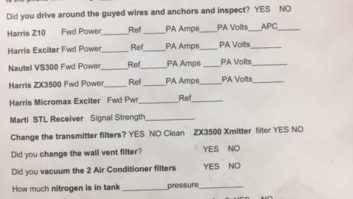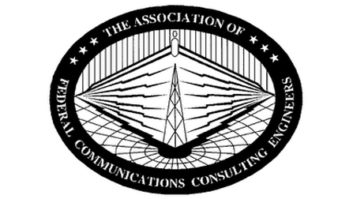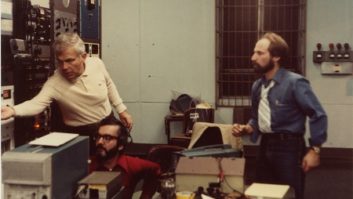Update: The draft NPRM described below was subsequently approved by the FCC ahead of its meeting, so the rule changes described here will soon be open for public comment.
Several changes to U.S. radio technical rules are on the agenda for the July 13 meeting of the Federal Communications Commission.
“We’re cleaning up our broadcast radio rules,” wrote Acting Chairwoman Jessica Rosenworcel. She said a notice of proposed rulemaking will be voted on that is intended to fix rules that are “redundant, outdated or in conflict with other rules.”
If this NPRM is approved, the commission would then take public comments on these proposed changes, for final action later.
What follows is a summary of the changes. The full proposal is posted on the Radio World website.
Maximum Rated Transmitter Power for AM Stations
This proposal would change section 73.1665(b) to remove the maximum rated transmitter power limit for AM stations.
“We tentatively conclude that an equipment limitation on potential transmitter power is outdated and unnecessary given our current reliance on actual operating antenna input power as the most accurate and effective means of ensuring that AM stations adhere to their authorized (nominal) power limits.”
The change would remove the maximum rated transmitter power for AM stations as set out in an appendix and delete a corresponding table.
NCE Community of License Coverage
This would change two rule sections that were adopted in 1997 to “harmonize” with the NCE FM community coverage standard in another section, which was adopted later.
“This change will create consistency across different rules regarding the requirement for community coverage for NCE FM stations,” the commission said.
The requirement in the newer section that stations reach 50% of their community of license or 50% of the population in their community would replace the more general requirement in the older sections stating that the station must cover “a portion of the community.”
“We propose to amend these two rules to state that an NCE FM station operating on a reserved channel must provide a predicted 60 dBμ signal to at least 50% of its community of license or reach 50% of the population within the community.”
FM Transmitter Interference to Nearby Antennas
The third change would eliminate section 73.316(d), “which we tentatively conclude is an unnecessary burden on applicants.”
The commission said this rule is used rarely and it tentatively concluded that the rule “does not prevent interference to any significant degree, if at all.”
The section says that applications proposing the use of FM transmitting antennas within 60 meters of other FM or TV broadcast antennas must include a showing as to the expected effect, if any.
The FCC says it is not aware of any industry complaints of this kind of interference over the 70 years that the rule has been on the books.
NCE FM Class D Second-Adjacent Channel Interference Ratio
Next, the FCC wants to change a section that sets out signal strength contour overlap requirements for NCE FM Class D stations, “to harmonize the requirements with the more permissive standard applied to all other NCE-FM stations.” It said it wants to be consistent across different NCE FM station classes regarding contour overlap limits.
“We tentatively conclude that the current Class D contour overlap requirement is not necessary given the proven efficacy of the less restrictive requirements for other stations and anticipate that this change will allow Class D stations greater site selection flexibility as well as the opportunity to potentially increase their coverage areas.”
Back in 2000 the commission said this change was warranted but it deferred action because of the pending creation of a low-power FM service.
“The LPFM service has now been established and is currently a relatively mature service, so we tentatively conclude that the time is ripe to extend the otherwise universal 100 dBu contour overlap standard for second-adjacent channels to NCE FM Class D stations.
Protection for Grandfathered Common Carriers in Alaska in the 76-100 MHz Band
Here, the commission would delete a requirement that radio stations in the 76–100 MHz band protect common carrier services in Alaska. It said there are no such services remaining.
Earlier, existing common carrier operations had been grandfathered in with the understanding that they would gradually move to other parts of the spectrum.
AM Fill-in Area Definition
The FCC wants to tweak the definition of “AM fill-in area” in one part of the rules to conform to the requirement in another part that the “coverage contour of an FM translator rebroadcasting an AM radio broadcast station as its primary station must be contained within the greater of either the 2 mV/m daytime contour of the AM station or a 25-mile (40 km) radius centered at the AM transmitter site.” The goal is consistency across the rules for fill-in translator transmitter siting.
International Agreements
Last, the commission plans to amend the allocation and power limitations for broadcast stations within 320 kilometers of the Mexican and Canadian borders to comply with current treaty provisions.
-The 1991 U.S.-Canada FM Broadcasting Agreement contains minimum distance separations but offers contour overlap parameters for short-spaced stations to demonstrate compliance, so the FCC wants to remove a reference to the agreement and include contour overlap-based protection for short-spaced stations. It would also replace an existing table with updated minimum distance separations agreed upon in 1997.
-Similarly, the commission wants to remove a reference to the 1992 U.S.-Mexico Broadcasting Agreement and include contour overlap-based protection for short-spaced stations.
-It proposes to update sections governing FM translators located near the Canadian and Mexican borders, to conform with the relevant treaties.
-Last, it would revise language about translator power limitations near the borders. The changes are intended to codify the international agreements, so if the NPRM passes, the commission will ask commenters “to focus on whether the proposed changes properly implement the relevant treaty provisions rather than suggest changes to any of the agreed-upon limits.”







